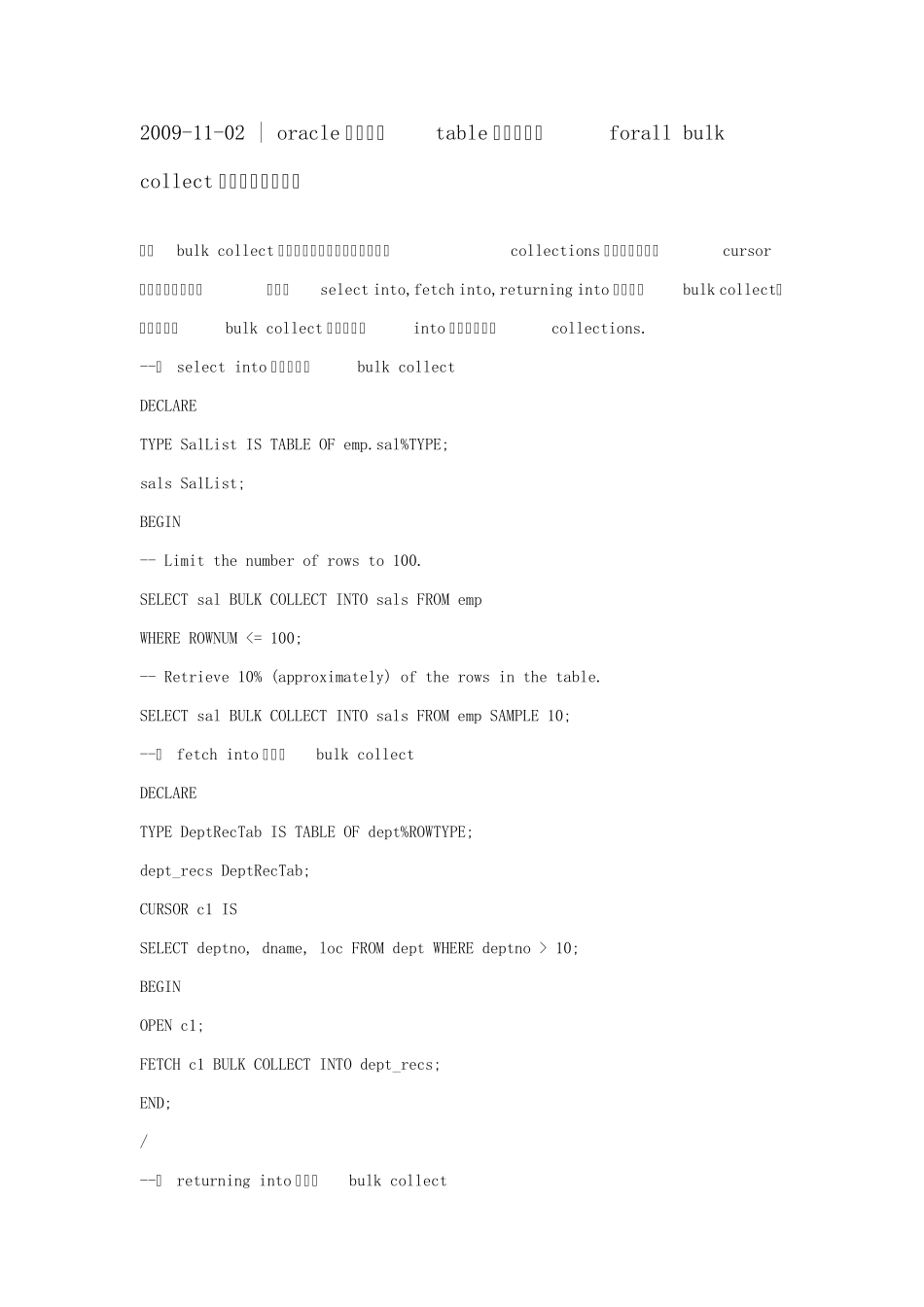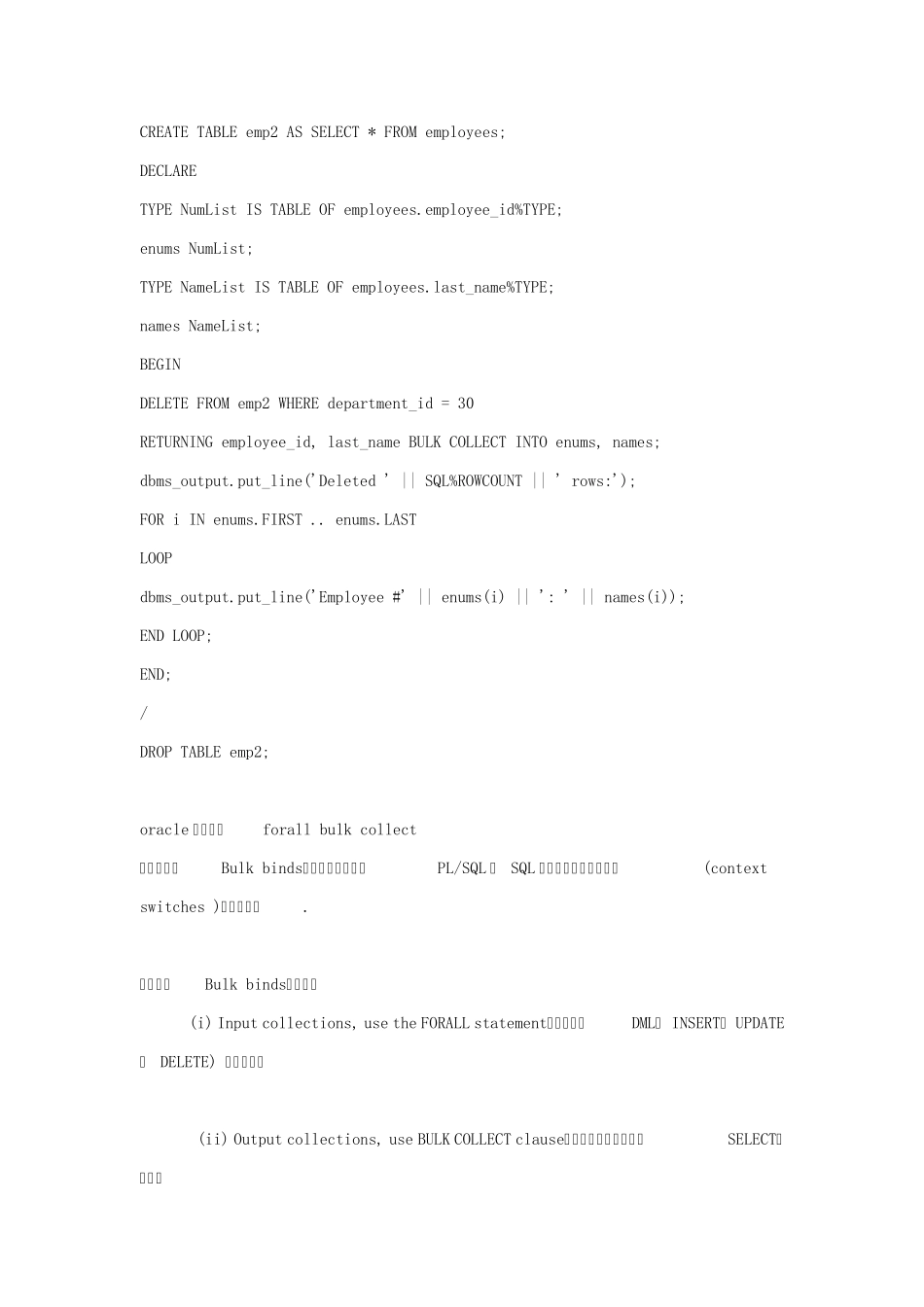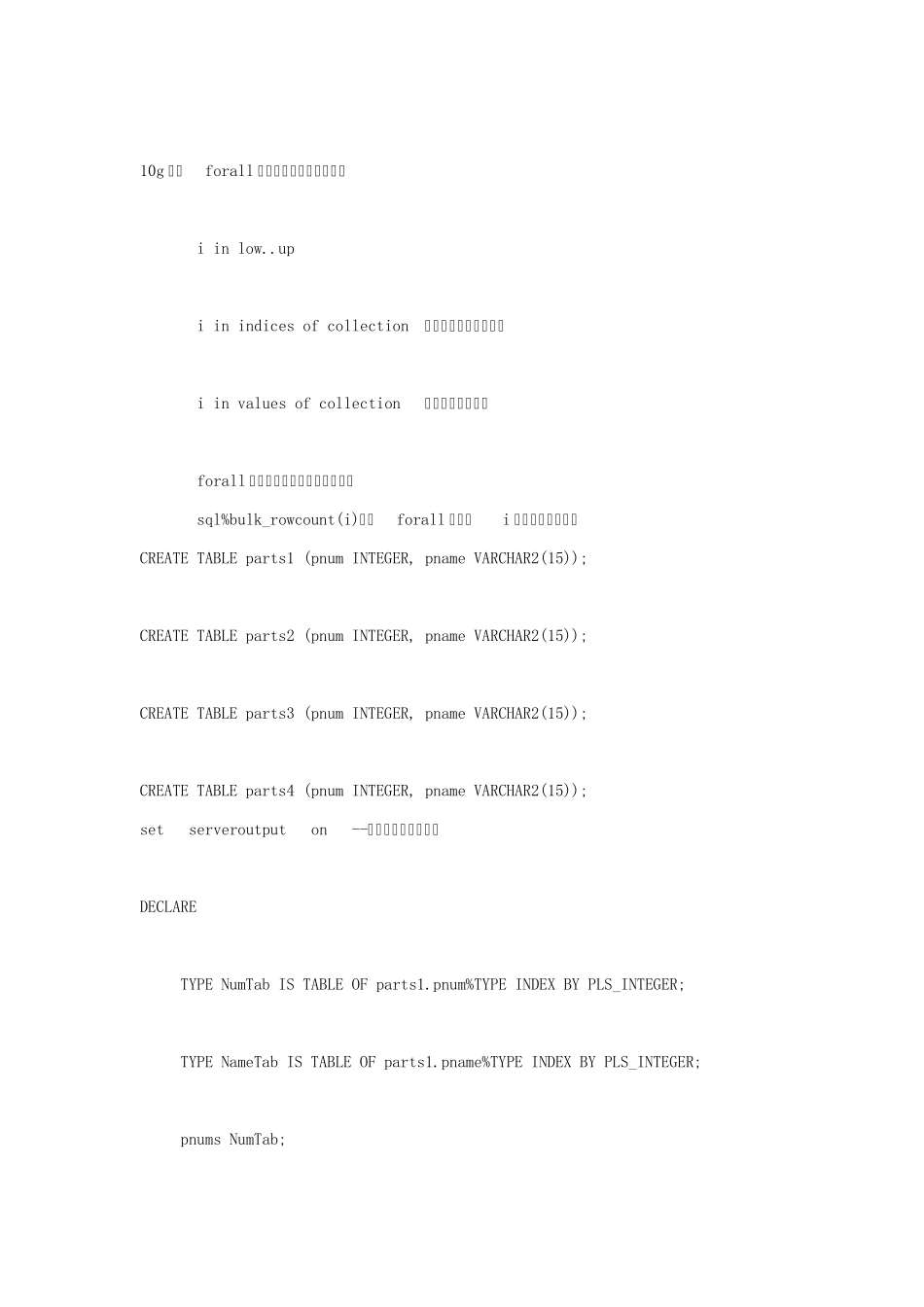2009-11-02 | oracle 批量绑定table 类型变-- forall bulk collect 用法以及测试案例 采用bulk collect 可以将查询结果一次性地加载到collections 中。而不是通过cursor一条一条地处理。可以在select into,fetch into,returning into 语句使用bulk collect。注意在使用bulk collect 时,所有的into 变量都必须是collections. --在 select into 语句中使用bulk collect DECLARE TYPE SalList IS TABLE OF emp.sal%TYPE; sals SalList; BEGIN -- Limit the number of rows to 100. SELECT sal BULK COLLECT INTO sals FROM emp WHERE ROWNUM <= 100; -- Retrieve 10% (approximately) of the rows in the table. SELECT sal BULK COLLECT INTO sals FROM emp SAMPLE 10; --在 fetch into 中使用bulk collect DECLARE TYPE DeptRecTab IS TABLE OF dept%ROWTYPE; dept_recs DeptRecTab; CURSOR c1 IS SELECT deptno, dname, loc FROM dept WHERE deptno > 10; BEGIN OPEN c1; FETCH c1 BULK COLLECT INTO dept_recs; END; / --在 returning into 中使用bulk collect CREATE TABLE emp2 AS SELECT * FROM employees; DECLARE TYPE NumList IS TABLE OF employees.employee_id%TYPE; enums NumList; TYPE NameList IS TABLE OF employees.last_name%TYPE; names NameList; BEGIN DELETE FROM emp2 WHERE department_id = 30 RETURNING employee_id, last_name BULK COLLECT INTO enums, names; dbms_output.put_line('Deleted ' || SQL%ROWCOUNT || ' rows:'); FOR i IN enums.FIRST .. enums.LAST LOOP dbms_output.put_line('Employee #' || enums(i) || ': ' || names(i)); END LOOP; END; / DROP TABLE emp2; oracle 批量绑定forall bulk collect 批量绑定(Bulk binds)可以通过减少在PL/SQL 和 SQL 引擎之间的上下文切换(context switches )提高了性能. 量绑定(Bulk binds)包括: (i) Input collections, use the FORALL statement,用来改善DML( INSERT、 UPDATE和 DELETE) 操作的性能 (ii) Output collections, use BULK COLLECT clause,一般用来提高查询(SELECT)的性能 10g 开始forall 语句可以...


